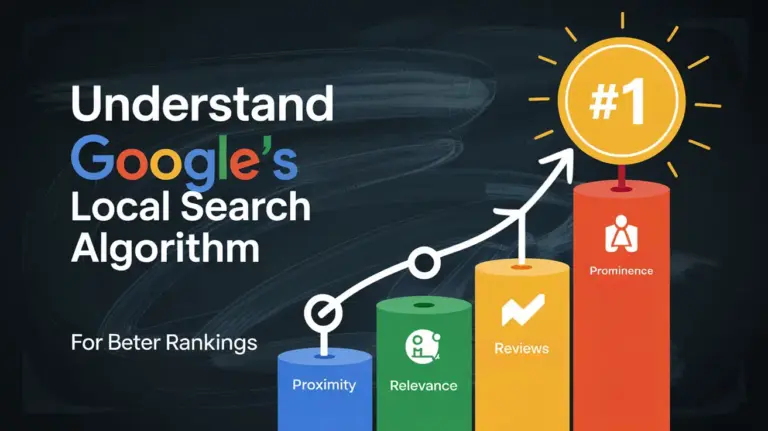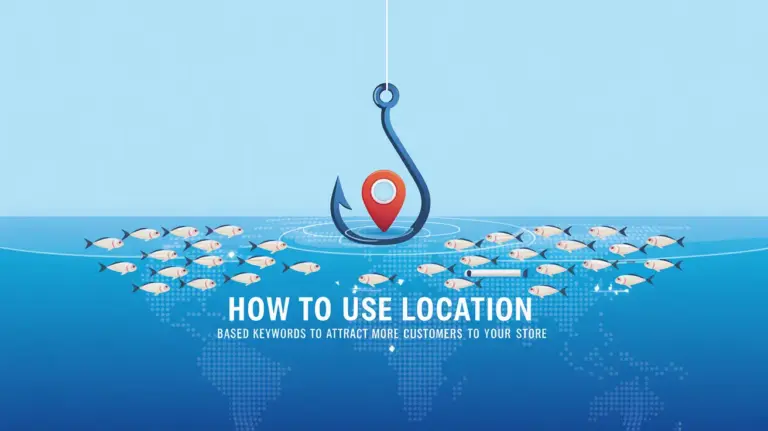As we navigate the digital landscapes, our quest for dynamic, future-proof websites has led us to embrace the pioneering realm of Headless WordPress. This powerful iteration of the well-established content management system (CMS) is revolutionizing how we think about website development, carving out a new frontier for creators and developers alike. By decoupling the WordPress backend via its robust API, we’re not just keeping pace with technological advancements but setting the stage for them.
Our journey into this new paradigm is charged with the promise of limitless creativity and performance. The traditional boundaries that once confined our online experiences are now dissolved, giving rise to a CMS for headless websites that redefine what is possible. With Headless WordPress, we wield the tools to craft unparalleled digital narratives, all while ensuring that the foundational power of WordPress propels us forward.
In recognizing the shift towards this decoupled architecture, we’ve committed ourselves to fully leveraging the WordPress backend API, ensuring our websites are not only built for today but are primed for the developments of tomorrow. Through this lens, we invite you to discover the potential that Headless WordPress holds—for us, for you, and for the future of web presence.
Key Takeaways
- Headless WordPress fosters future-proof websites poised for technological evolution.
- Decoupled WordPress architecture invites innovation and superior user engagement.
- Utilizing the WordPress backend API enhances our capability to build robust digital experiences.
- Embracing CMS for headless websites ensures scalability and creative freedom.
- Our commitment to headless solutions marks the dawn of a new era in web development.
Defining Headless WordPress and Its Core Advantages
As the digital landscape evolves, developers seek solutions that break away from traditional limits, embracing systems like headless CMS for WordPress. The headless approach offers new dimensions of flexibility and security, benefitting developers and content creators alike. Let’s delve into what makes headless WordPress an innovative shift in content management strategy.
What Is Headless WordPress?
Headless WordPress is a content management system that operates without a frontend, delegating the presentation layer to external applications. This approach utilizes the WordPress REST API, enabling the backend to serve content to many different frontends, from mobile apps to high-performance websites. Using WordPress as a headless CMS, developers can harness the power of popular frameworks like React or Vue.js to deliver enhanced user experiences.
The Flexibility and Scalability of Headless Solutions
The architecture of a headless CMS development inherently supports expansion and innovation. Decoupled WordPress systems separate concerns between the content repository and the presentation layer, offering the maneuverability needed to craft unique frontend experiences. Scalability is readily achieved, as headless setups can effortlessly handle increased demand, propelling businesses toward new heights without compromising performance or aesthetic coherence.
Enhancing Security with a Decoupled System
Regarding digital security, the enhanced security offered by headless approaches is not trivial. A decoupled WordPress architecture significantly reduces the risk associated with front-end attacks. Since the content delivery and management are separated, vulnerabilities typically exposed in more traditional WordPress setups are diminished, providing an extra layer of security and peace of mind for businesses and developers alike.
Technical Insights: Implementing Headless WordPress

When approaching a headless WordPress setup, we begin with a foundational installation of WordPress to harness its backend’s robust content management capabilities. The journey to a fully operational headless environment relies heavily on the WordPress REST API, which facilitates a seamless bond between the backend and the chosen frontend landscape.
Enabling the WordPress backend API is crucial. It acts as a dispatcher, conveying content to many frontends—web, mobile, or any other application interfacing with WordPress. This API-driven architecture demands a strategic, thoughtful implementation to ensure smooth retrieval and display of content, molded to fit the unique requirements of each digital experience we craft.
By leveraging the REST API, WordPress evolves into a decoupled powerhouse, allowing us to dictate the frontend experience from any technological platform, unfettered by traditional WordPress theme constraints.
Below is an outline of the critical steps in our process:
- Installation and setup of a clean WordPress instance.
- Activate and configure the WordPress REST API.
- Selection and preparation of the frontend technology stack.
- Ongoing development and integration of RESTful API calls.
- Iterative testing and customization phases to refine user interactions.
Ahead of the curve, this configuration frees us from the trappings of monolithic architectures and places us squarely on the cutting edge of web development.
In the table below, we compare the traditional WordPress flow with our headless WordPress approach:
| Traditional WordPress | Headless WordPress |
|---|---|
| Frontend tightly linked with the backend | Backend and frontend are completely separated |
| Limited to PHP and WordPress themes for frontend | Freedom to use any frontend technology stack |
| Content served directly from WordPress | Content delivered through REST API calls |
| Plugin-dependent extensions | API-driven interactions allow for scalable extensions |
We’ve entered a new realm of possibilities with our headless approach, pushing the boundaries of what we can achieve with WordPress as a backend. It’s more than a mere trend; it is a resilient framework for future-proof digital platforms that call for agile, secure, and innovative solutions.
The Future-Proof Benefits of a Decoupled CMS

The evolution of content management systems into decoupled architectures has marked a new era in web development. Not only do these systems offer enhanced agility, but they also pave the way for significant improvements in website maintenance and future scalability. Weaving in the principles of performance optimization and faster loading times, they serve as the backbone for creating a tailored user experience that can readily evolve with technology adaptation, ultimately future-proofing web entities against the ever-changing digital landscape.
Speed and Performance Optimization
A decoupled CMS infrastructure streamlines the user experience with rapid content delivery. With a focus on performance optimization, it eliminates unnecessary bulk, narrowing down front-end components to those essential for functionality and faster loading times. This refined approach ensures that users enjoy a seamless interaction with web applications, even during peak traffic conditions.
Creating a Tailored User Experience
By liberating the front-end development from a fixed presentation layer, we leverage the freedom to design custom interactions unique to our brand. This level of tailored user experience meets specific visitor needs and fosters a deeper connection with our audience. Our imaginative capabilities are boundless through headless WordPress, shaping experiences as bespoke as our vision.
Staying Ahead with Technology Adaptation
As innovators in the digital space, we recognize the importance of keeping pace with emerging technologies. The modular nature of a decoupled CMS facilitates technology adaptation, allowing us to swiftly incorporate cutting-edge features such as AI, AR, and IoT. This adaptability is not just about staying current; it’s about future-proofing our digital offerings to ensure longevity and relevance in a competitive market.
| Feature | Benefit | Impact on User Experience |
|---|---|---|
| Performance Optimization | Enhanced loading times and efficiency | Reduced wait times, increased satisfaction |
| Custom Interactions | Unique branding opportunities | Memorable, personalized engagement |
| Technology Adaptation | Integration of new digital innovations | Continually evolving and dynamic content |
Real-World Applications of Headless WordPress
At the core of modern web development, Headless WordPress stands as a testament to flexibility and performance across a broad spectrum of applications. Its most notable real-world implementations offer transformative outcomes for businesses and users alike. From robust e-commerce with headless WordPress platforms that provide finely-tuned shopping experiences to streamlined content management for mobile apps and dedicated interfaces for membership sites, the practical examples of Headless WordPress are as diverse as they are effective.
Below, we’ve curated a selection of headless WordPress examples to showcase its potential in live environments:
- E-Commerce Platforms: The flexibility of decoupled WordPress is revolutionizing the e-commerce sector, offering highly customizable shopper journeys and interactive UI elements, all tailored to enhance customer engagement.
- Mobile Applications: For applications on the go, headless architecture provides a consistent and efficient system for content delivery, unifying user experience across diverse mobile ecosystems.
- Membership Sites: Membership portals leverage headless setups to empower users with personalized dashboards, specialized content access, and seamless user account management.
These examples showcase not just versatility but the strategic value of adopting a headless approach:
| Industry | Benefits of Headless WordPress |
|---|---|
| E-Commerce | Custom shopping experiences, dynamic product displays, and enhanced performance during sales or high-traffic events. |
| Mobile Apps | Uniform content distribution, faster load times, and the ability to push updates without app store approvals. |
| Membership Sites | Personalized content based on user roles, secure data handling, and greater control over member interaction. |
Our understanding deepens when we consider these applications in context. Each sector harnesses the inherent strengths of Headless WordPress—speed, security, and scalability—to meet specific needs that standard WordPress configurations may not sufficiently address. The result? Sophisticated solutions that continue to push the boundaries of what’s possible in the digital realm.
Conclusion
In pursuing innovative CMS solutions, the momentum has decisively shifted towards Headless WordPress, charting a decoupled web development roadmap that promises to redefine how we conceive and deploy web content. This freedom allows us to innovate and tailor digital experiences that meet and exceed expectations for speed, performance, and engagement.
Our commitment to harnessing headless WordPress is rooted in its capacity to deliver a genuinely future-proof foundation for web development. As we embrace its potential, we acknowledge the challenges inherent in adopting this approach; there is a learning curve, and complexities arise. Yet, the benefits far outweigh the initial hurdles. We are now empowered to create performance-driven sites and applications that are responsive and singular in their interaction and design.
As we look toward the horizon of web technologies, it’s evident that the flexibility and robustness bestowed by Headless WordPress position us to adapt swiftly and effectively. The digital landscape is perpetually evolving, and through this advanced CMS, our digital platforms are well-equipped to grow alongside it, ensuring that our presence online remains cutting-edge and resolute in the face of perpetual change.
FAQ
What Is Headless WordPress?
Headless WordPress refers to a content management system (CMS) configuration where a website’s front end, or the presentation layer, is decoupled from the WordPress back end. This allows developers to use WordPress as a headless CMS, managing content through the back end and delivering it to any front end via the WordPress REST API. It provides greater flexibility in designing the user experience across different digital platforms.
What are the Core Advantages of Using WordPress as a Headless CMS?
WordPress as a headless CMS offers several advantages, such as enhanced flexibility and scalability, better security, and the ability to create a tailored user experience. It also allows for performance optimization, with faster loading times, and facilitates the adoption of emerging technologies and future-proofing digital platforms.
How Does a Decoupled System Enhance Security?
A decoupled or headless system enhances security by reducing the potential attack surface. Since the front end is separate from the back end, potential vulnerabilities in themes or front-end plugins don’t affect the content management and storage systems, thereby minimizing the risk of security breaches.
What Are the Flexibility and Scalability Benefits of Headless WordPress?
Headless WordPress offers unprecedented flexibility and scalability for web applications, enabling developers to use any front-end technology stack. This means they can build fast, responsive interfaces that can be scaled up easily as user traffic grows. Additionally, it allows for creating custom experiences for different devices or platforms without altering the back-end infrastructure.
How is Performance Optimized in a Decoupled WordPress Architecture?
Performance is optimized in a decoupled WordPress architecture because the front end is purpose-built and streamlined for efficiency. Without the overhead of traditional theme rendering, decoupled front ends can serve content faster, cache more efficiently, and provide a better user experience, especially when dealing with high traffic.
What Does Creating a Tailored User Experience Entail in the Context of Headless WordPress?
Creating a tailored user experience in the context of headless WordPress involves customizing the front-end presentation independent of the back end. Designers have more control over how the content is displayed, which allows them to design unique user interfaces and interactions that align with specific brand standards or customer expectations.
How Does Technology Adaptation Contribute to Future-Proofing with Decoupled CMS?
Technology adaptation contributes to future-proofing in a decoupled CMS scenario by allowing developers to quickly and easily incorporate new technologies and tools, such as AI, AR, and IoT, into their front end. This agility ensures the digital experience stays current with web trends, offering enhanced functionality and engagement without overhauling the back-end content system.
What Are Some Real-World Applications of Headless WordPress?
Real-world applications of headless WordPress are diverse and include e-commerce platforms that require personalized shopping experiences, mobile applications benefiting from consistent content delivery, and membership sites featuring custom-tailored dashboards. These varied uses demonstrate the versatility and adaptability of headless WordPress in fulfilling specific digital needs across a broad range of industries.







